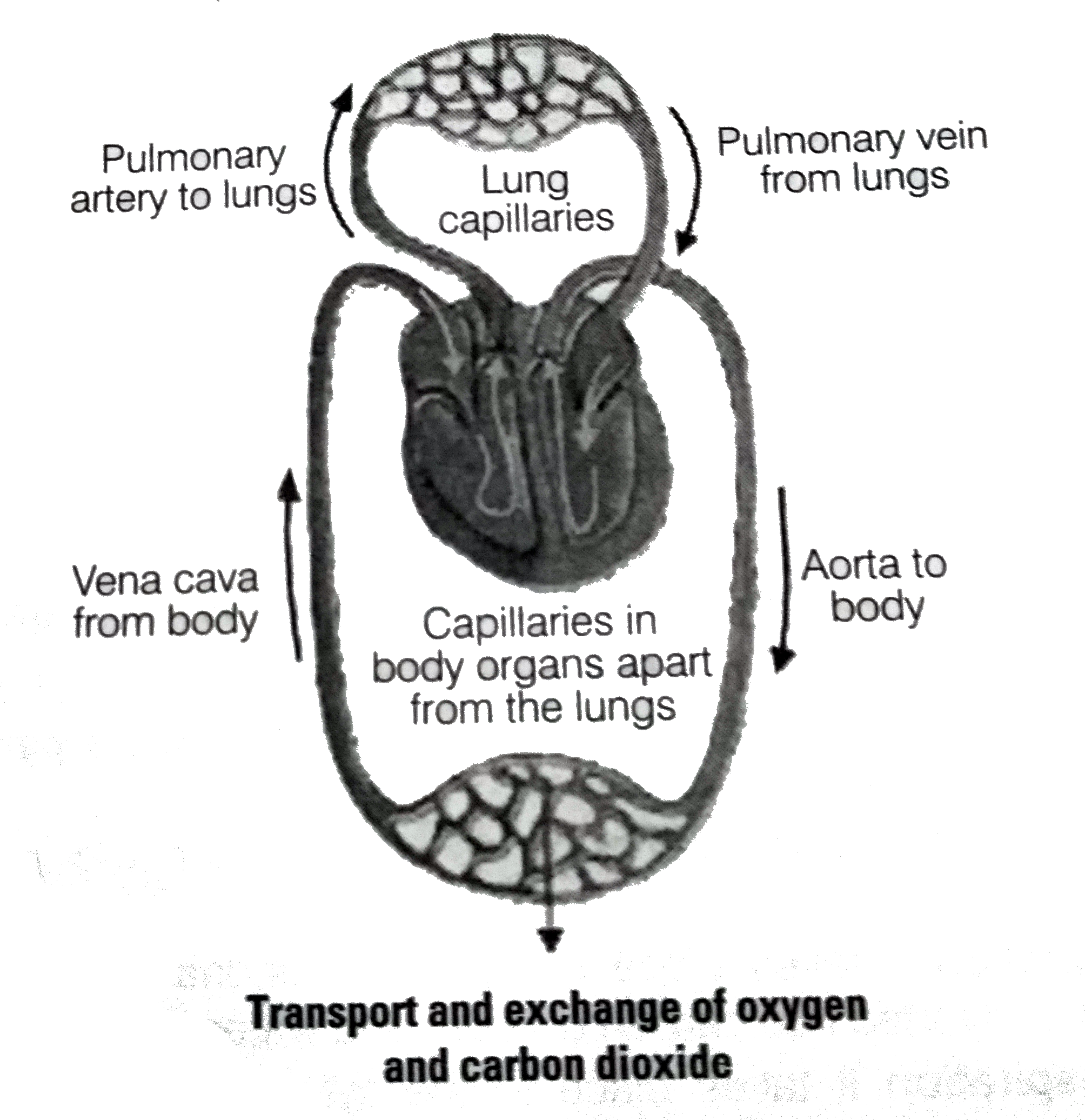Describe the flow of blood through the heart of human beings.
Video Solution
Text Solution
Flow of blood through human heart Oxygen rich blood from the lungs comes to the thin -walled upper chamber of the heart on the left, the left atrium.
The left atrium relaxes when it is collecting this blood is transferred to it. When the musculer left ventricle contracts reaches, the blood is pumped out to the body.
De - oxygenated blood from the body to the upper chamber on the right , the right atrium, and it expands . As the right atrium contracts , the corresponding lower chamber , the right ventricle , dilates , This transfer blood to the right ventricle , which in turn pumps it to the lungs for oxygenation.
Since ventricles have to blood into various organs, they have thicker muscular walls than the atria do.

The whole process is repeated continuously . The blood circulatory system in human is an example of double circulation since the blood travels twice through the heart in one complete cycle.
(i) The pathway of blood from heart to the lungs and back to the heart is called pulmonary circulation.
(ii) The pathway of blood from heart to rest of the body back to the heart is called systemic circulation . Theses two together make double circulatory system.
|
Updated on:21/07/2023
Topper's Solved these Questions
- BOOK - NCERT EXEMPLARCHAPTER - LIFE PROCESSESEXERCISE - Short Answer Type Questions2videos
LIFE PROCESSES
- BOOK - NCERT EXEMPLARCHAPTER - LIFE PROCESSESEXERCISE - Long Answer Type Questions1videos
LIFE PROCESSES
- BOOK - NCERT EXEMPLARCHAPTER - HOW DO ORGANISMS REPRODUCEEXERCISE - How Do Organisms Reproduce58videos
HOW DO ORGANISMS REPRODUCE
- BOOK - NCERT EXEMPLARCHAPTER - OUR ENVIRONMENTEXERCISE - LONG ANSWER TYPE QUESTIONS2videos
OUR ENVIRONMENT
Similar Questions
Knowledge Check
- Question 1 - Select One
In which of the following groups of organisms, blood flows through the heart only once during one cycle of passage through the body?
ARabbit, Parrot, TurtleBFrog, crocodile, PigeonCWhale, Labeo, PenguinDShark, dog fish, sting ray - Question 2 - Select One
Single circulation ,i.e, blood flows through the heart only once during one cycle of passage through the body, is exhibited by
ALabeo , Chameleon , SalamanderBHippocampus , Exocoetus , AnabasCHyla, Rana,DracoDwhale,dolphin,turtle - Question 3 - Select One
Arterial blood pressure in human beings :
A120 and 80 mm HgB150 and 100 mm HgC50 and 100 mm HgDNone
Describe the process of digestion of food in human beings.
View SolutionName the annelid which sucks blood from cattle and human beings.
View SolutionDescribe the conducting system of human heart.
View SolutionDescribe the composition of human blood.
View SolutionWho discovered the blood group in human being?
View Solution

